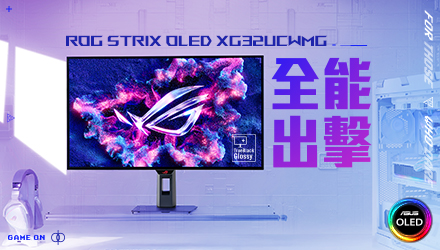 在 AGESA 1202B 發佈後,板廠陸續更新相關 BIOS。其中微星和華碩分別都加入了特別選項,解掉該版 BIOS 預設帶來的記憶體延遲上升的現象。在 REDDIT r/Amd 上有一個帖子,討論華碩加入 CORE TUNING CONFIG FOR GAMING 功能 (來源),更引來名為 j0k1ngKnight 的疑似 AMD 員工 (可能是 Josh Knight) 回應和解釋 AGESA 1202B 更新的細節。依筆者理解,那位 AMD 員工好像是在說,AGESA 1202B 確實會導致一些測試記憶體延遲的軟體呈現較差的成績,但這不是 BUG,也無法反映真實性能 (提升),AMD 是有意為之。
在 AGESA 1202B 發佈後,板廠陸續更新相關 BIOS。其中微星和華碩分別都加入了特別選項,解掉該版 BIOS 預設帶來的記憶體延遲上升的現象。在 REDDIT r/Amd 上有一個帖子,討論華碩加入 CORE TUNING CONFIG FOR GAMING 功能 (來源),更引來名為 j0k1ngKnight 的疑似 AMD 員工 (可能是 Josh Knight) 回應和解釋 AGESA 1202B 更新的細節。依筆者理解,那位 AMD 員工好像是在說,AGESA 1202B 確實會導致一些測試記憶體延遲的軟體呈現較差的成績,但這不是 BUG,也無法反映真實性能 (提升),AMD 是有意為之。
AMD 解釋 AGESA 1202B 記憶體延遲提升原因
AGESA 1202B 延遲修正選項更勝 AGESA 1202A?
以下是該位 AMD 員工 j0k1ngKnight 回應的內容,分為兩大段,前段回應 ASUS,後段有提到 MSI:
Hey All
A quick PSA wrt to this option from the engineer that implemented them:
These options change the way AMD CPUs handles certain operations and data. They are a set of core optimizations we made after the initial zen5 launch.
Generally these optimizations dont do a ton, but we're a bit better in most use cases. The trade off of this optimizations was that it made reported latency from benchmarks like AIDA 64 higher.
This is because all modern processors use advanced prefetchers and cache retention policies that cloud dram latency measures. To accurately measure dram latency these features need to be accounted for (with the easiest way disabling them).
In general the recommendation is to use level 2. This is the default option in current bios. Off is the behavior on the original launch bios of 9000 series. It will appear to have better latency, but is an artifact of the test, not representative of the actual performance.
This applies for the above mentioned menu from ASUS, and not specifically to other menus that may be announced/released from other MOBO manufacturers.
Thanks for sharing this! There may be some use cases where legacy is better. These tunings are very in depth and can be very use case specific. In the use cases we tested we saw net positive with limited downside across gaming and non-gaming use cases. However, despite our best efforts, we can never have 100% coverage and sometimes our optimization choices are even trade offs within the data sets we have.
Any time the community calls out edge cases we've missed, we review and adjust accordingly. It warrants a deep dive on these settings for these titles.
It's not immediately clear that the MSI option is this set of tunings. Our partners also work hard to implement their own optimizations.
以筆者理解,AMD 內容大意是華碩與微星所引入的 CORE TUNING CONFIG FOR GAMING 和 LATENCY KILLER 選項,改變了 AMD CPU 特定的行為和資料處理。AGESA 1202B 包含 AMD 在 ZEN 5 首發之後的最新 CPU 最佳化設定,經 AMD 測試在絕大部份使用場景可提升一點點 AMD CPU 表現,代價卻是在一些測試軟體例如 AIDA64 上被測出來延遲上升。AMD 繼而解釋現代 CPU 使用 advanced prefetchers and cache retention policies,會影響一些記憶體延遲的量度。
在華碩的 BIOS 裡,那個 CORE TUNING CONFIG FOR GAMING 實際上有 3 個子選項 (來源)。AMD 員工指出,LEVEL 2 是 AMD 的建議預設,OFF 是回到 ZEN 5 首發的設計,筆者猜測這邊 OFF 的意思是對應華碩的 LEGACY 模式。
AMD 回應內容中,比較重要的一點是關閉 AMD 在 AGESA 1202B 的最佳化設計,也就是手動打開板廠提供的記憶體延遲下降設定,看起來很好看,但不反映真實性能。artifact 這個字筆者當年第一次學到的時候,是在描述花屏 / 破圖,也就是顯示卡超頻設定太進取導致畫面出現綠點閃爍。artifact 好像也有人為 / 人工的意思,非天然非自然的意思。
It will appear to have better latency, but is an artifact of the test, not representative of the actual performance.
該 REDDIT 帖子本身是討論華碩的設定,後來該 AMD 員工也有澄清以上內容是在說華碩,AMD 不是很了解 MSI 那邊的操作,然後補上一句我們的合作夥伴 (板廠) 致力提供它們的最佳化設定。
It's not immediately clear that the MSI option is this set of tunings. Our partners also work hard to implement their own optimizations.
這麼聽起來,以筆者理解,AMD 是認為 AGESA 1202B 的修正是好意,有助提高 CPU 在絕大部份場景的性能。AMD 或許有遺漏一些特定場景出現性能倒退的情況,AMD 將持續研究這些場境提供更佳的處理器性能。AMD 明言在內部測試中,確認 AGESA 1202B 整體帶來性能提升的效果 (NET POSITIVE),也就是提升多於損失。
In the use cases we tested we saw net positive with limited downside across gaming and non-gaming use cases. However, despite our best efforts, we can never have 100% coverage and sometimes our optimization choices are even trade offs within the data sets we have.
YOUTUBE 頻道 Compusemble 於 2024 年 12 月 5 日上傳影片 AGESA 1.2.0.2b BIOS Provides Performance Boost In Gaming Over AGESA 1.2.0.2a - Especially In 1% Lows (來源),測試 RYZEN 9800X3D 在 華碩 ROG STRIX B650E-F GAMING WIFI 在最近兩版 BIOS 的遊戲性能,就是 AGESA 1202A 與 1202B。華碩是在 AGESA 1202B 首度加入那個 CORE TUNING CONFIG FOR GAMING,而據說 AGESA 1202A 已出現延遲上升的情況。Compusemble 指出在測試 AGESA 1202B 時有手動選取 LEGACY 模式使 AIDA64 的記憶體延遲從 68ns 降至 64ns。
換言之,AGESA 1202A 預設打開 AMD 的 LEVEL 2 設定,AGESA 1202B 則提供了 LEGACY 模式。Compusemble 的測試被不少網友視為板廠 LEGACY 模式大戰 AMD 預設。
Compusemble 一共測試了七款遊戲,並發現 AGESA 1202B 的 LEGACY 模式,也就是 ZEN 5 首發階段的低延遲設計,能改善遊戲性能。這代表板廠加入的設計,好像不像 AMD 所指延遲上升僅出現在跑分軟體,而是真實影響處理器性能 (ACTUAL PERFORMANCE)。特別是 1% LOW 的表現,也剛好對應記憶體延遲這方面。不過以上測試是 1202A VS 1202B 的 LEGACY 模式,不是 1202B AUTO VS LEGACY,而 1202B 的 AUTO (LEVEL 2) 跟 1202A 差多少並沒有被測試。所以 1202B AUTO (LEVEL2) 還是有可能比 1202A 強,意味無法確認就是 1202B LEGACY 比 1202B AUTO 強。
所以目前看來板廠所提供的特別選項,把記憶體延遲降回去,還是比較適合遊戲場景。不過 AMD 似乎不想退讓,並將會繼續往這個方向走。目前由於 AMD 沒有強制板廠取消提供特別選項讓使用者調回初版性能,所以大家還是有得選。AMD 已確認有看過 Compusemble 的影片,並承認 AMD 有漏掉一些使用場景。
Thanks for sharing this! There may be some use cases where legacy is better. These tunings are very in depth and can be very use case specific.
Any time the community calls out edge cases we've missed, we review and adjust accordingly. It warrants a deep dive on these settings for these titles.
目前華碩的設計有加入 LEVEL 2 (AMD 預設) 以及 LEVEL 1 和 LEGACY,微星那邊好像只有開關兩個選項 (來源)。但在 BIOS 裡,微星有提到打開 LATENCY KILLER (回到初版設計?) 可能影響 CPU 性能,華碩並未明確解釋那些選項的用途 / 影響。筆者將繼續觀望 AMD 的發展與板廠大鬥法,因為筆者沒有 ZEN 5。





















